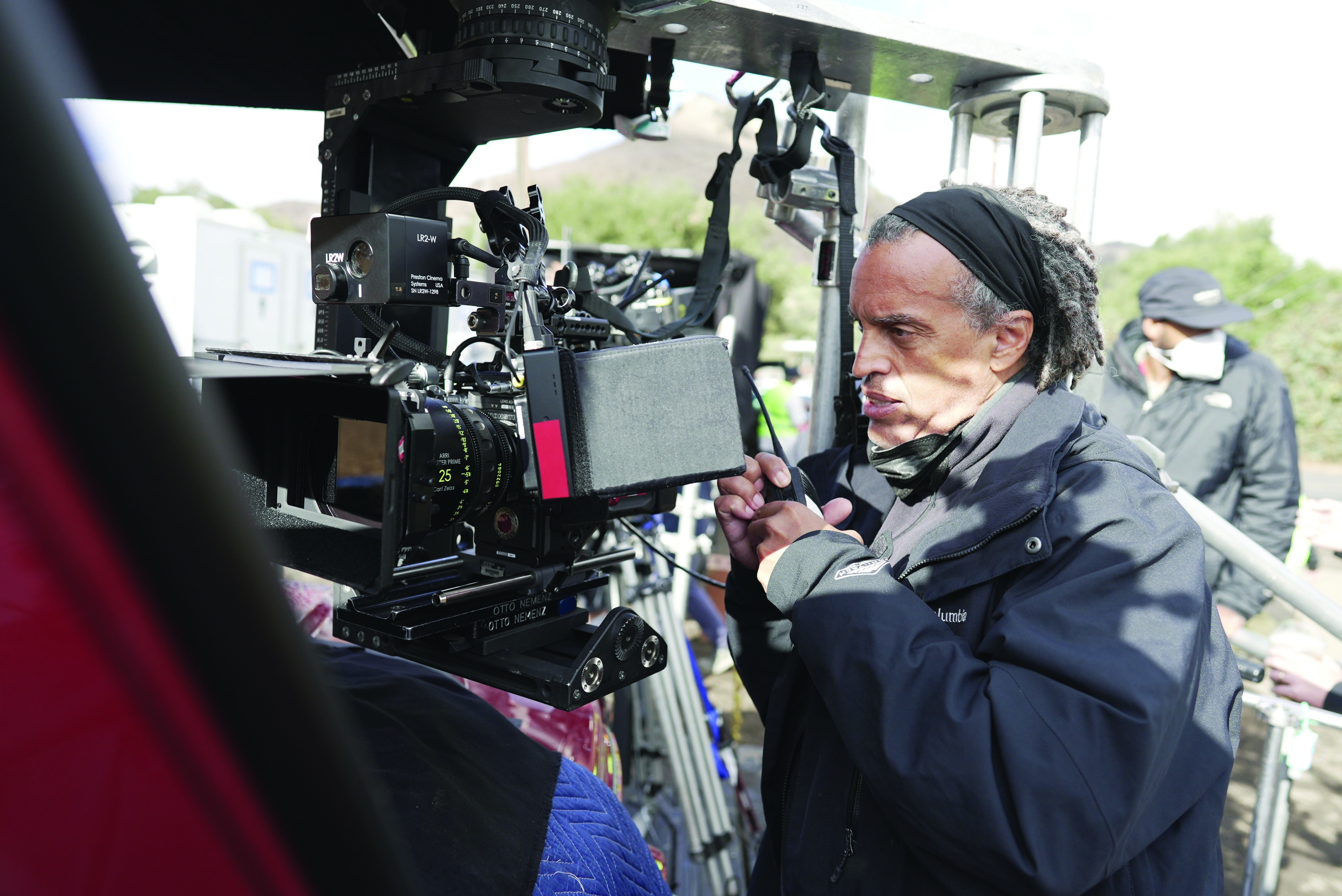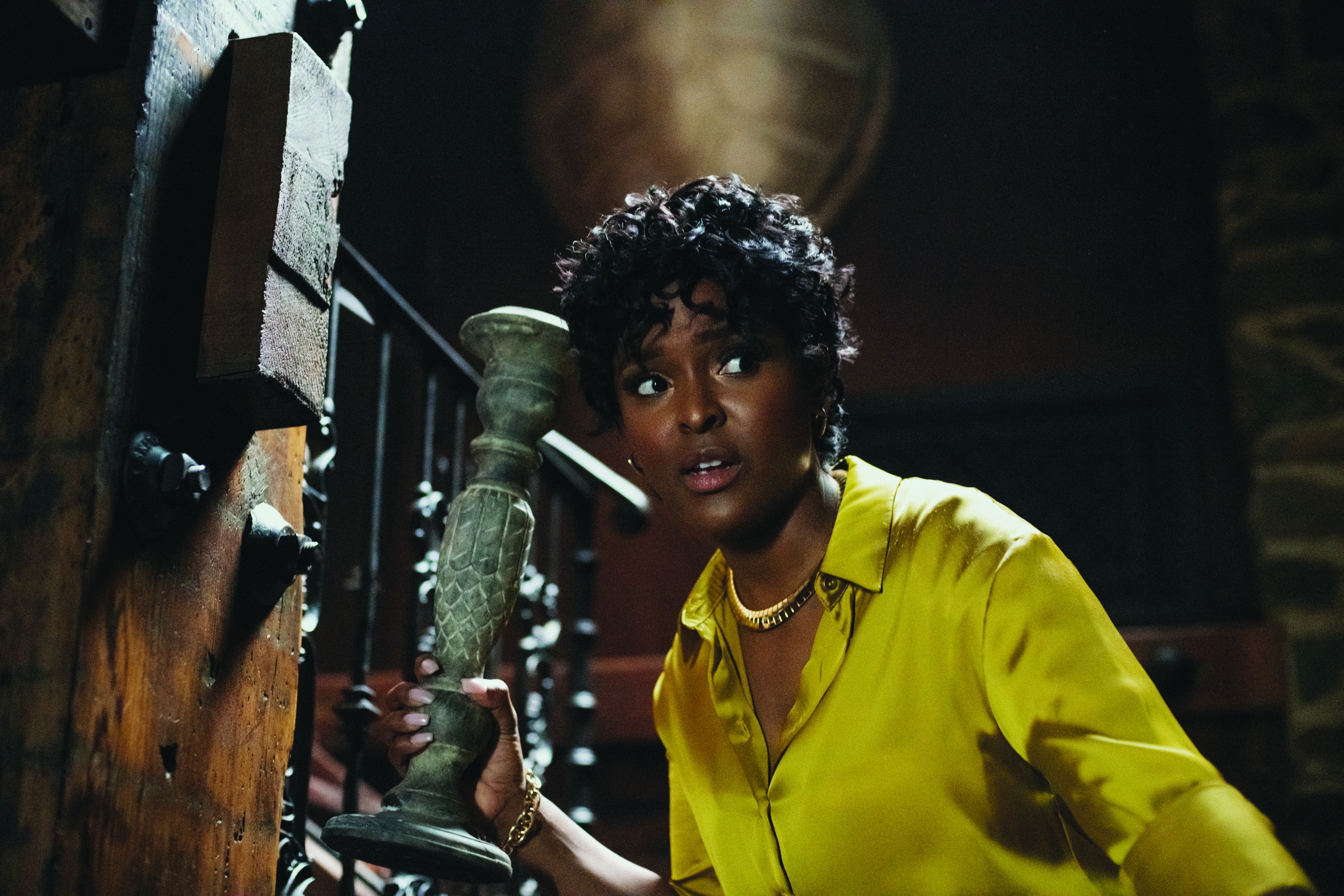
The Blackening: “Don’t Be Afraid of the Dark”
Cinematographer Todd A. Dos Reis, ASC, discusses some of the strategies he uses to frighten audiences.
The genre hybrid The Blackening mixes elements of horror with race-conscious comedy: A group of college friends plans to spend the Juneteenth holiday at a cabin in the forest, where they contend with a killer who seems to have stepped out of a horror film.
Jokes abound, and director Tim Story is well known for comedies like Barbershop (AC Oct. ’02) and Ride Along, but Todd A. Dos Reis, ASC was keen to avoid shooting The Blackening like a comedy. Instead, horror classics like The Exorcist and The Texas Chain Saw Massacre, along with the more recent The Strangers and Don’t Breathe, served as inspirations.
“A Little Claustrophobic”
“When Tim and I started talking about this, because he’s a master of comedy, I told him I was not going to have any comedy-lighting tropes for this film — I was shooting this as straight horror or a very dark drama,” says Dos Reis. “There are literally no wide, bright, multi-character shots with a bunch of physical comedy. It was more tight — I wanted the frame to be a little claustrophobic.”
Leaving Story and the actors to bring out the comedy, Dos Reis employed many techniques he had mastered shooting music videos and scripted television shows to create the dark, claustrophobic look of The Blackening. “No matter what the situation, I lean more toward the dark side,” the cinematographer says. “I like to deal with pools of light and try to let darkness take over the majority of the frame. I like to see eyes no matter how dark the room is, so I always play with the eyelight; I feel like if I can see an eye, I can see the actor and I can see the character.”
Dos Reis routinely pushed the boundaries of what the show’s Red Ranger Monstro 8K VV camera could capture. He recalls, “My DIT would say, ‘Todd, I think you’re a little dark in the shadows, I think you need to bring it up.’ I would say, ‘Don’t be afraid of the dark. What would Gordon Willis say?!’”
“I wanted to make it seem like there could be somebody close by, someone in an attic, someone in a basement.”

On Location in L.A.
The production schedule for The Blackening was 20 days, none on studio soundstages. Most of the L.A.-based shoot took place on location at a house in Brentwood and a house in West Adams. The Brentwood house was used for all exteriors and also had a game room, living room and kitchen where much of the story unfolds. With little space to hide lighting rigs, Dos Reis relied primarily on the track lighting already installed in the ceiling. To make each scene visually distinct, he’d add Rosco ½ CTB and Full CTB to the MR16 bulbs in the track lighting. “Every time I had to reuse the same location, I changed the lighting, which also forwarded the story because there was something happening that caused the lighting change.”
Lighting Strategies
In regard to lighting Black performers, Dos Reis notes, “I started out lighting music videos for rap artists and R&B artists, so I’ve been lighting Black people for my entire career. I don’t do anything special; a lot of it is playing reflected light off of varying Black skin tones. If you have a white person with a Black person in a scene, obviously, you have to either bring the Black person up or the white person down. In this movie, we had very few white people to bring down, but I think it all worked out pretty well.”
As for the suspenseful moments in The Blackening, “I just let the actors handle it. I don’t think it’s about special lighting. Because I do tend toward the dark side, you can’t see what’s coming — you sometimes have trouble seeing in dark corners or even around someone’s shoulder. I wanted to make it seem like there could be somebody close by, someone in an attic, someone in a basement. It’s about playing with the toe of the lighting curve, in the shadow part, and letting that scare happen.”

TECHNICAL SPECS
1.85:1
Cameras | Red Ranger Monstro 8K VV






